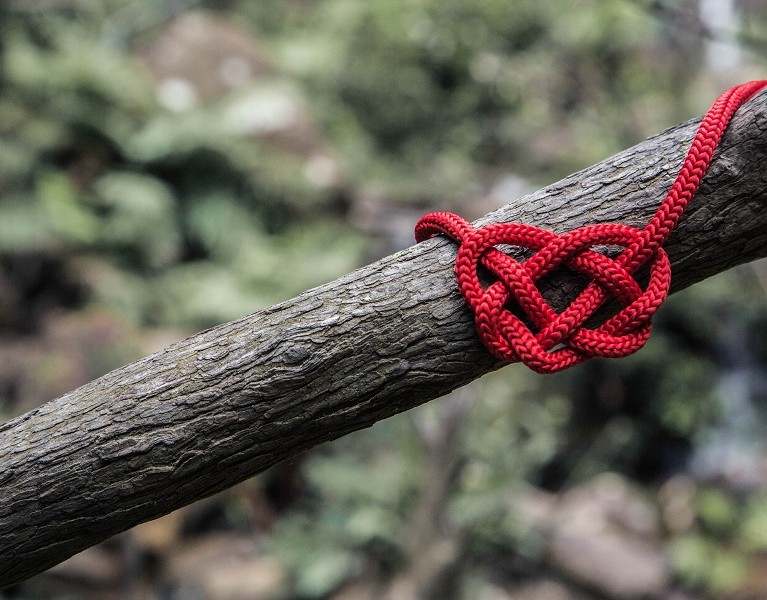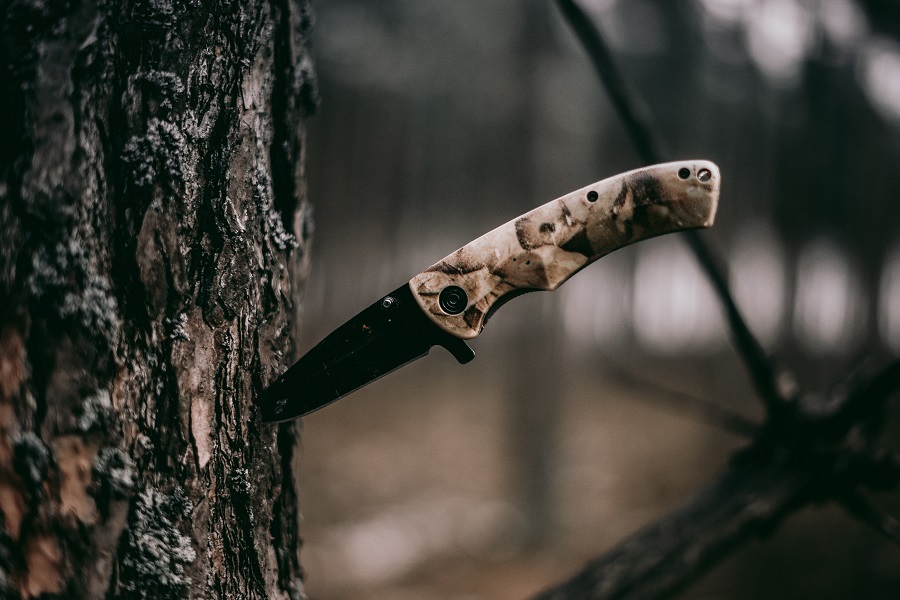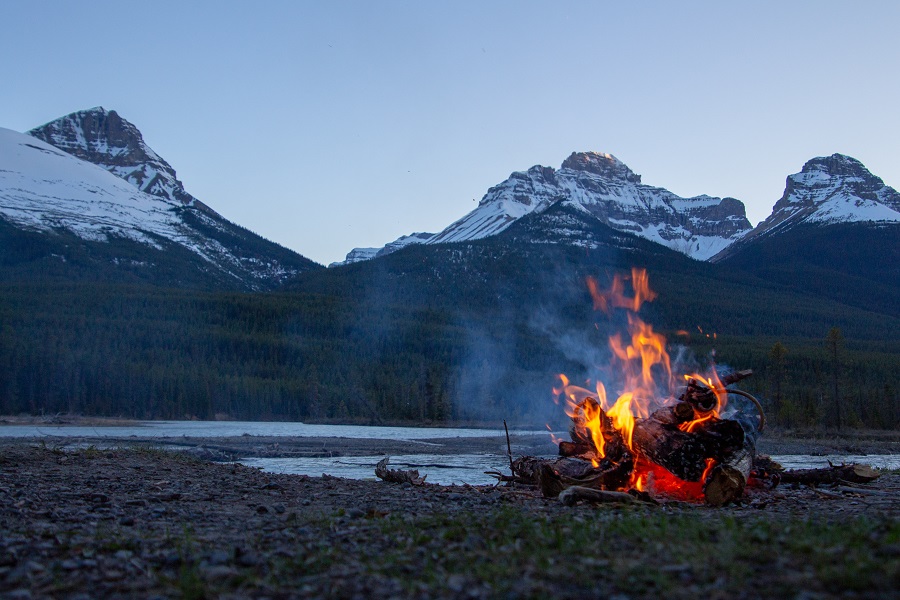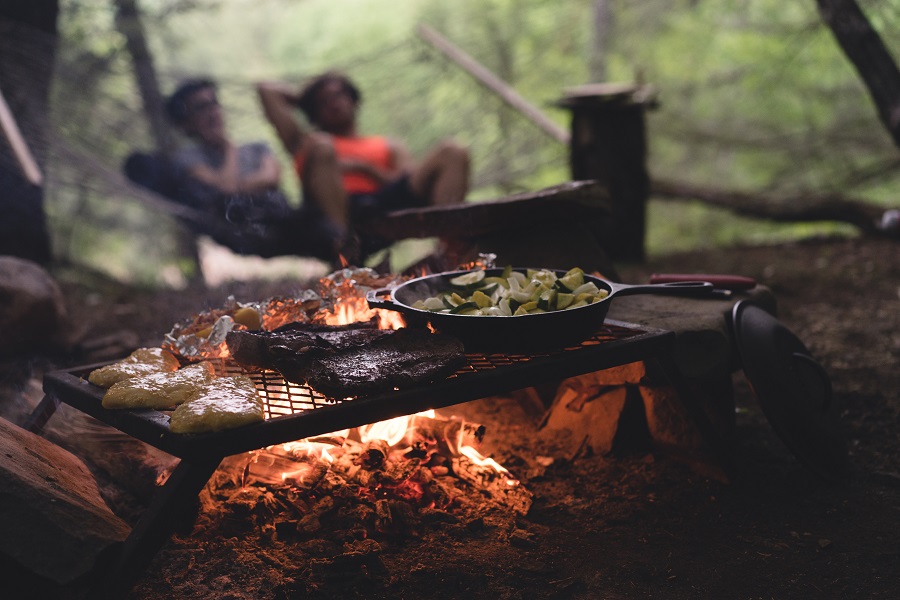- 1. What's Bushcraft?
- 2. Five Fundamental Bushcraft Skills
- 2.1. Skill One: Understanding, selecting and caring for knives
- 2.2. Skill Two: Knot-tying and lashing techniques
- 2.3. Skill Three: Building shelter with available materials
- 2.4. Skill Four: Building, igniting, and maintaining fires
- 2.5. Skill Five: Camp furniture and hand-built primitive bushcraft tools
- 2.6. Bonus Skill: Tracking
- 3. Tips for Getting the Family Involved
- 4. Want to learn more?

Modern Bushcraft in the Backcountry... Or Backyard
Table of Contents [Show]
"Isn't bushcraft just a word for survivalism that doesn't make you sound like a nut?" asked my wife when I first suggested our daughters and I sign up for a weekend workshop. She had me there. Bushcraft is about being self-reliant in the outdoors, and it's a huge component of survival skills —although the former, of course, has little to do with reloading ammo, stocking up on canned goods, and building fallout shelters.
Not that there's anything wrong with that, I suppose, but anyone who wants to insulate themselves against emergencies, especially those of us who spend a lot of time in the backcountry, needs skills as much as they need bug-out-bags and emergency car kits. Plus, there's a sense of empowerment you feel when you can create tools, structures, and even primitive machines with little more than a good knife and some free time.
So almost a decade ago, Spartan trips to New Mexico and Utah's diverse environments became a year-round family thing. We're lucky that our daughters fell in love with roughing it before they learned to walk, and that bushcraft projects dovetailed perfectly into our usual outdoor adventures.
Here's what the twins, my wife, and I think you should know if you or your family are curious about jumping in:
What's Bushcraft?
We all recognize these names: Bear Grylls, Les Stroud, Cody Lungren. All have starred in popular outdoor survival shows, each with his own particular style and taste for drama. But what about Richard Harry Graves and Leslie James Hiddins? Both Australians blazed the trail for what we call bushcraft today, teaching skills necessary to survive and thrive in Australia's outback.
Bushcraft is, after all, the art of living primitively in remote, unforgiving environments. Australia has the latter in spades, as do many parts of northern Canada and Alaska where bushcraft is, today, taken for granted as a way of life.
But take a look out your window. That overgrown lawn may be a wild enough setting to start developing your own self-reliance skills.
Five Fundamental Bushcraft Skills
Congratulations! You’ve just discovered an activity that discourages you from spending money on equipment! Or, at least, on too much equipment. Once you’ve mastered a few basic bushcraft skills and set yourself up with the appropriate outdoor adventure clothing, it’s up to you to create uber-deluxe “glampsites” from found materials.

A knife is an essential tool for bushcraft and one of the best tools for numerous camp tasks. Photo by Sebastian Pociecha..
Skill One: Understanding, selecting and caring for knives
Your survival knife is one of your most important bushcraft tools, other than your noggin. Lacking an ax, you can use it to cut wood and hack stuff. If you don't have a spade, you can dig cat holes or small trenches with a good blade. And, of course, it cuts things, although it's always good to have a folding saw at hand as well.
High-quality multi-tools belong in every bushcraft kit, but wherever it's legal, carry a fixed-blade knife capable of holding an edge and withstanding tons of abuse. Learn how to care for your survival knife and how to use a knife sharpener to keep it razor-sharp. High carbon steel knives stay sharper for a longer time than stainless.
I recommend you pick up a copy of How to Make Knives by Richard W. Barney and Robert B. Loveless. This book is a fantastic first purchase for those interested in knife-making history and simple crafting techniques, but the bottom line is that you'll better understand how a blade's form affects its function. A large knife with a larger blade is not necessarily a more efficient bushcraft tool - it depends on the situation.
Skill Two: Knot-tying and lashing techniques
What use is a mile of paracord if you don't know how to use it? You can practice essential knots anywhere, though you might get funny looks if you're tying a highwayman's hitch on your commuter train's grab handles.
Challenge yourself and your family members to learn a few new knots each week. AnimatedKnots.com is, in my opinion, the best resource. It's divided by activity (climbing, fishing, search and rescue, sailing, etc.) and by type (hitches, splices, bends, mats, and so on.) Pick up a few lengths of rope—each in a different color—and master each knot so you can tie it with your eyes closed. Even if you never set foot in the woods again, you'll have gained a skill set with universal applications.
Skill Three: Building shelter with available materials
I know. You spent hundreds of bucks on a backpacking tent last season, and you want to use it. No reason you can't, unless your private jet had to make an emergency landing in the eastern Sierra, and once you were free and clear, it went up in flames (with, of course, your entire camping kit).
Check out "5 Bushcraft Shelters You Should Know How to Build" on the Reality Survival blog where you'll learn which shelters have the best heat-preserving properties for various environmental conditions. The post is stuffed with useful text and video content, and you'll come away prepared to use available natural materials wherever you're stranded.
Don't be afraid to try cold-weather winter camping. When you do, experiment with snow caves after reading this Traditional Mountaineering article on safely building snow caves.
Bushcraft isn't just about making temporary shelters for a weekend campout or a survival situation. Various site-sourced materials and simple bushcraft tools (even tools made on the fly) can produce structures that will last for years. If you have access to land with permissible building codes and a lack of red tape, you can build anything from a small smokehouse to a comfortable weekend retreat from a combination of roundwood and wattle-and-daub construction, felled logs, or dry-stacked stones.

Skill Four: Building, igniting, and maintaining fires
Everyone wants to learn how to make and use a bow drill, but savvy outdoors adventurers will keep a good, old-fashioned Bic lighter or container of waterproof matches with them wherever they go. No method of starting a fire, though, guarantees it won't fizzle out before you freeze your butt off. By all means, learn primitive fire-starting skills, but don't neglect the art of gathering and arranging wood and tinder, using thermal mass to store heat, and shaping your fire to focus its intensity where you need the most warmth. These articles will get you started:
- Campfire basics from Out There Colorado
- Various firebuilding techniques from Know Prepare Survive
- Tips for building a fire in the rain (or with wet wood) from Mom Goes Camping
Skill Five: Camp furniture and hand-built primitive bushcraft tools
Combine your new skills by building simple camp structures and bushcraft tools. Cooking tripods are the perfect place to start, requiring a simple lashing technique and three sturdy poles. Graduate to projects that require a folding saw, or hand saws and hatchets, or build comfortable cots made with woven canes and branches. Speaking of weaving, you can build your own snowshoes if you have access to the right materials.
As you gain experience, you might find yourself improvising with bushcraft tools and bushcraft gear to help you with more complex bushcraft creations: Wooden mallets, sawbucks, or even water-powered hammers.
Bonus Skill: Tracking
Nobody in our family will ever be able to tell what kind of mouse ran through a particular pile of oak leaves (and what it had for breakfast), but each of us is at a point where we can tell the difference between a white-tail doe and buck, or a coyote and a domestic dog. You don't have to be a hunter to appreciate tracking skills; you'll experience the outdoors more vividly when you notice the subtle clues left behind by wildlife that may have been on your path only seconds before you came crashing through.
Tom Brown Jr.’s The Science and Art of Tracking and The SAS Guide to Tracking by Bob Carss are commonly regarded as the best introductions to tracking wildlife and even people. Build a tracking box (your neighbors and homeowner’s association will think it’s a kids’ sandbox) to learn more about soil displacement from footprint pressure. The local cats will offer plenty of pawprint examples and, unfortunately, opportunities to identify spoor.

Tips for Getting the Family Involved
Take it from me: Don't force your family to go "all feral" at once, especially if your family's current idea of camping involves paved loops and power hookups. The best kiddie pool for bushcraft projects is your own backyard, garage, or living room. What DIY project can you make with one bladed tool?
Encourage each family member to choose projects that interest them, and to take the lead in becoming the group "expert" on a subject. Your ten-year-old will love teaching his older sister how to make rope out of shredded bark, and she'll play along if she knows she can demonstrate her newly-mastered square lashing technique—using his forearms, as she "forgot" to bring along two sticks. Maybe your partner would love to learn how to purify water? Maybe you have something in your bushcraft kit that could spark their interest.
Do you have a fireplace or fire pit at home? Explain what you're doing as you build a fire, and come up with simple recipes for cooking over an open flame, even if it's just old-fashioned popcorn in a pot. Invest in a cast-iron Dutch oven or two, and throw down the gauntlets with a bake-off challenge. And yes, prepare for giggles whenever you say "Dutch oven."
Give each family member (including your partner) a turn to pick family projects, or to toss nominations into a hat. The same goes for weekend campout destinations!
Finally, don't be a know-it-all, especially if you're as new to bushcraft as they are. Taking a "let's learn this together" approach empowers them to take initiative and show off, and in my experience, kids will take any opportunity to "one-up" their parents. Before we got into bushcraft, that was limited to tech-savvy superiority and rattling off popular K-pop lyrics. Now, it's about shaming the old man's crawdad catching skills.
Your family's bushcraft activities might ignite passions in related activities such as carpentry, bowhunting, and even good home cooking. If they outgrow bushcraft and embrace more modern methods of self-sufficiency, so be it; the point is to spark curiosity and promote activities requiring patience and conscientiousness.
Want to learn more?
There's no end to online how-to videos, illustrated books, and bushcraft blogs, but if you want to interact with people of all skill levels putting bushcraft tools and skills into practice, look up an event (often called a "rendezvous") in your area. A great place to form an online and real-world network of backwoods buddies is the BushcraftUSA.com forum, which has a section dedicated to local, national, and international bushcraft events. The site's also useful for—among many other things—reviews on paid workshops.
If you have kids, encourage them to join a scouting-type program with a focus on hands-on outdoor projects. We like the co-ed, all-are-welcome Navigators USA but any organization that encourages family participation and promotes primitive skill-building will do.
Don’t wait for the perfect camping weather, the next regional rendezvous, or for UPS to deliver your shiny new blade or some other bushcraft tool. Just jump into it. When you spend time working with different wood and natural fibers, and learn which stones chip and flake just so (and which are the best tools), it soon becomes second nature. Or, really, first nature; we’re still genetically programmed to exist in and interact with our wild environment, rather than smartphone keypads and video game controllers. Nothing wrong with a few rounds of Minecraft, but the analog version’s a whole lot better.
Featured image – A knot in Blue Mountains, Australia. Photo by Will O.


